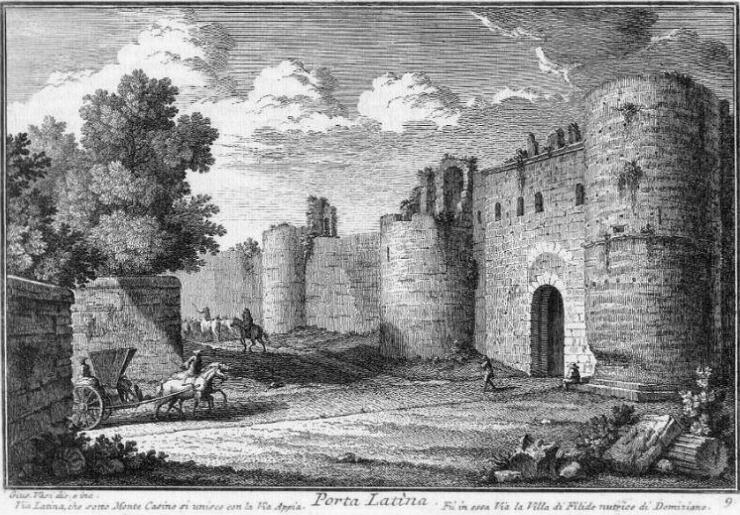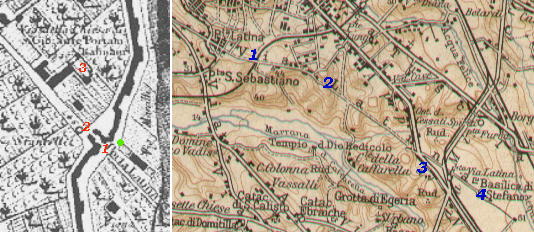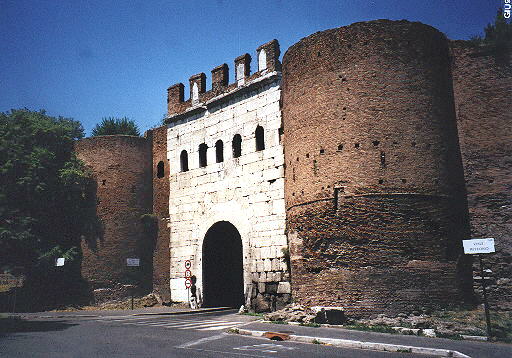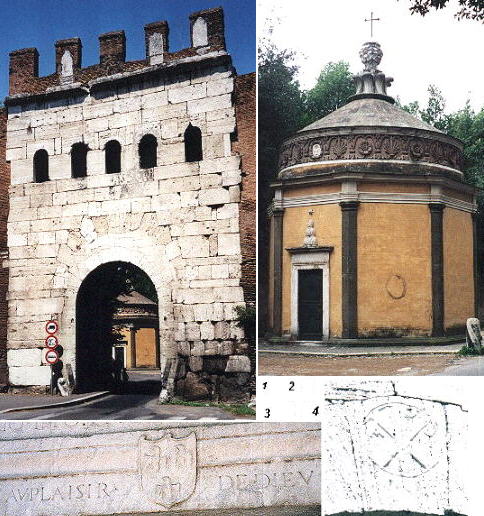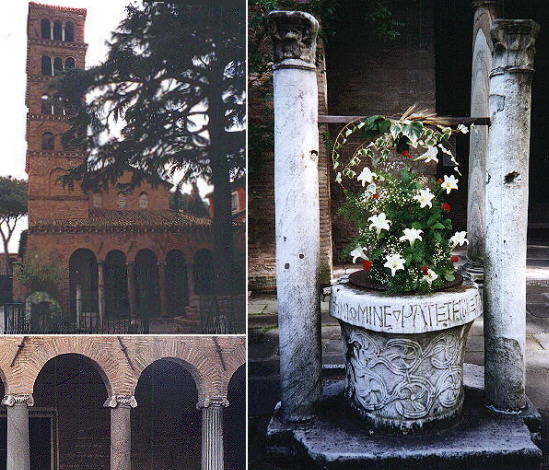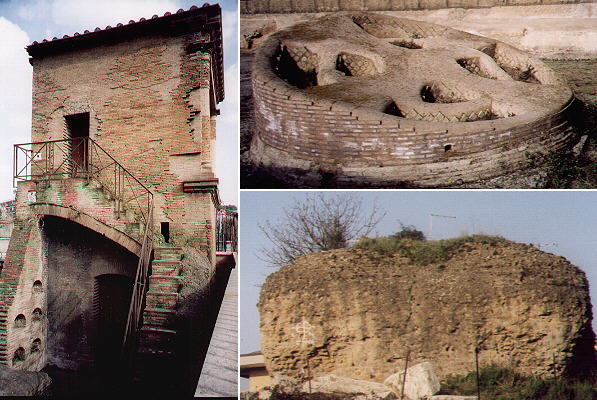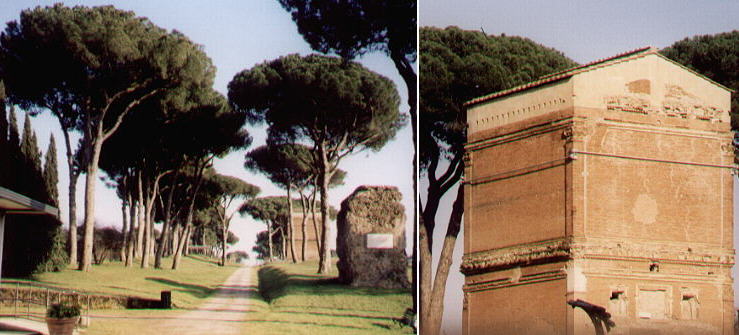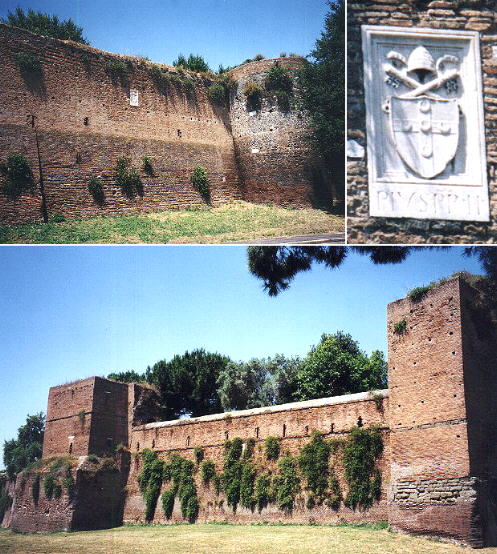  Porta Latina (Book 1) (Map A4) (Day 5) (View C10) (Rione Campitelli) In this page:
Porta Latina is very similar to Porta S. Lorenzo.
The two round towers were added by Belisarius in the VIth century. Via
Latina led to little towns south of Rome and eventually joined Via Appia.
The limited importance of Via Latina explains why this gate was closed
for long periods. The view is taken from the green dot in the small 1748 map here below which shows:
1) Porta Latina;
2) S. Giovanni in Oleo; 3) S. Giovanni a Porta Latina. The larger 1924 map shows 1) Tomb at the bridge crossing the railway; 2) Roman fountain excavated in Via Cesare Baronio; 3) Mausoleo dei Cessati Spiriti; 4)
Tombe della Via Latina.
The gate is very well preserved and the limited traffic did not require openings in the walls or enlargement of the gate. The Gate and S. Giovanni in Oleo
The gate (1) has no decorations but a monogram (4) on the keystone. Behind the gate you see the Oratory in memory of St. John the Evangelist who in this place survived boiling oil (Oléo). The current Oratory (2) is said to have been designed by Bramante in 1509, for sure it was restored under Alexander VII by Francesco Borromini who added the frieze (background) and the papal mountains and star. The rear entrance bears the coat of arms (3) of the French prelate B. Adam and an unusual inscription in French.
The church dates back to the Vth century and it was built using materials of Roman temples.
Via Latina reached some towns of lower Latium and eventually it joined Via Appia near Monte Cassino. It had limited importance, but nevertheless it was chosen as a site for erecting funerary monuments or building villas. Today its initial stretch runs through a highly populated borough and the memories of the past come as a surprise. The image shows 1) a brickwork funerary monument decorated with two columns (near a bridge crossing the railway); 2) a fountain at the center of a large basin (in Via Cesare Baronio). The Romans usually kept fish in their fountains so the holes in the basin of this fountain were perfect for fish during spawning; 3) a funerary monument which was covered by slabs of travertine (Mausoleo dei Cessati Spiriti).
A section of Via Latina at its fourth mile was excavated in the XIXth century and several hypogea (underground chambers) were identified. They were near a hay-loft which turned out to be a three-storey Roman tomb. It is called Tomba Barberini because in the XVIIIth century the area belonged to this family. It is very similar to Sepolcro di Annia Regillia. Today this section of Via Latina is owned by the State. The Walls between Porta Latina and Porta S. Sebastiano
This section of the walls is very picturesque. Several restorations
were carried out by the Popes.In the top picture you see a coat of arms
of Pius II. The picture below shows a restoration (between the two towers)
by Pius IV.
Next plate in Book 1: Porta S. Sebastiano Next plate in Day 5 itinerary: Porta S. Sebastiano Next step in your tour of Rione Campitelli: Porta S. Sebastiano
Go
to |
All images © 1999 - 2003 by Roberto Piperno. Write to romapip@quipo.it
